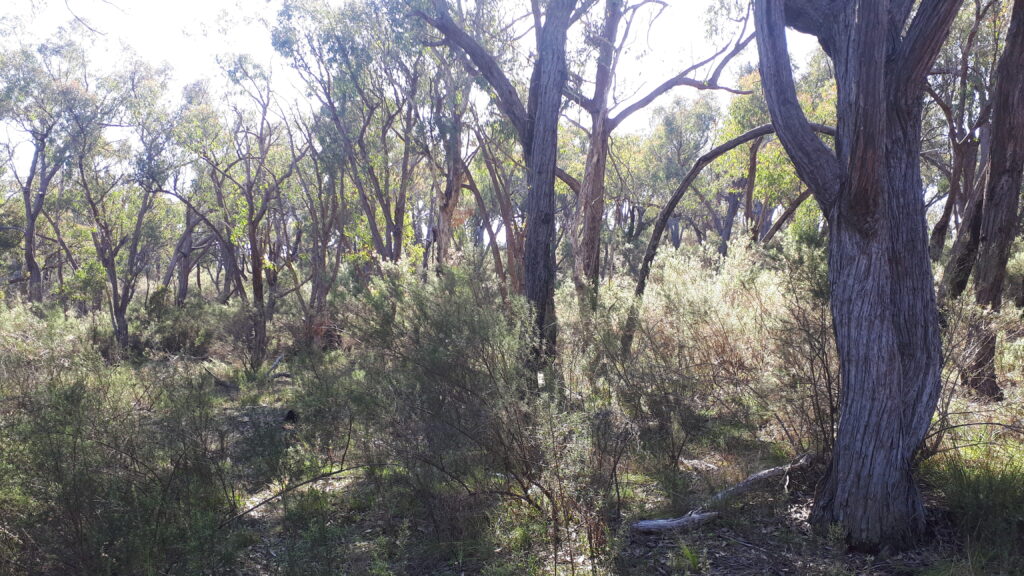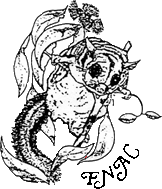As Field Natters arrived at Dungowan Street for our walk through The Pinnacle Nature Reserve, I showed my copy of A Guide to the creatures in your neighbourhood just published by The Urban Field Naturalist Project. The 270 page book is complementary to an exciting online collaboration of the same name, and …is dedicated to helping people notice and appreciate wildlife in urban environments.
As we moved slowly through The Pinnacle Reserve, we found ourselves living the realities of field-natting and, through our shared stories, re-creating the joys presented by nature even on a windy, wintry but sunny day walking along well-watered access tracks and among vegetation celebrating La Nina hydrated soils. Between us we were prepared, in the naturalist tradition, with field guides, binoculars, frog and bird apps, a range of outdoor experiences and were dressed and shod for the expected weather. We brought curiosity, knowledge, appreciation of other species to combine with the book’s suggested naturalist’s methodology: slow down, observe, record, ask questions, share. The northern edge of The Pinnacle, mostly sclerophyll forest, is an urban interface with, mostly large, Hawker homes and their gardens.
A dollop of bird poo observed on the track revealed that the donor had eaten Cotoneaster berries, but how far do Currawongs or Silvereyes fly after eating their meals of berries in suburban gardens?
Before the Friends of the Pinnacle began to restore the reserve there were hundreds of berried weeds and thousands of thistles taking space, soil nutrients and rainfall from the native species.
Although in winter mode, each storey showed the enormous efforts of the Parkcare volunteers who have brought the reserve back to its potential over the past 10 years. The Friends of the Pinnacle’s website www.fotpin. org.au is rich with details of the reserve’s species including their systematically documented weed management program. We were constantly impressed with the results as we walked through Stringybark Forest, open grassed areas, boulder fields, past gullies up to and south-west down from the Pinnacle’s 704 m summit.
The 360° views give an inspiring perspective to the reserve as part of the ACT’s hills and ridges; spaces that became Canberra Nature Park. The Pinnacle’s views to the south are impacted by Whitlam and Denman Prospect as new suburbs seen on agricultural land and the once pine-forested space to the east of Bluetts Block, (which FNAC visited on 18 February 2022).
For some of us our walk lasted over three hours defining what it is to be Field Naturalists according to the book and our own lives. We slowed down to savour each moment of being immersed in nature.
We observed, in the Eucalyptus macrorhyncha forest, thickets of Bursaria and Cassinia grown rangy and tall since the last hazard reduction burn and the two La Nina years. Cassinias are vital to insects and the birds that forage for them. Leafless Indigo, Indigofera adesmiifolia plants are a common feature of the forest edge. Deeper in and in other sections of the reserve, Indigofera australis is more common and will flower purple soon. The shrubs partly hide the newer bush paths made or adapted from roos’ cross-country trails which lead to patches of orchids. The bark of many Stringybarks showed scratch marks especially around holes, fissures and hollows where claws helped possums, gliders and possibly bats with numerous journeys to and from their homes. Everlasting daisies, Xerochrysum viscosum, have extended their range. A few flowers still showed the yellow bracts that attract pollinators.
The summit’s Stringybark icon has succumbed to a fickle south easterly wind during that last January hail storm. We’d observed several other trees felled in a tornado-like line, the dead leaves on their crowns facing NNW.
The Cypress Pines and Cherry Ballart are two other fascinating and evergreen trees that stand out among the eucalypt varieties. The latter is a saprophytic species producing berries whereas the Callitris pines are regularly checked by Yellow-Tailed Black Cockatoos for the edibility of their cones. The Kurrajong saplings around several eucalypts showed how birds effect the successful distribution of seeds and the juveniles’ intriguing leaf form diversity. The pale purple flowers of a Hovea heterophylla caught the sunlight but there wasn’t even a sign of Swainsona sericea leaves on the other side of the forest track.
A mixed feeding flock of small birds caught our attention, with a White- Throated Treecreeper the catalyst for John’s investigations as we neared the cars. Another walker said she’d seen Double-Barred Finches.
We asked questions.
Our curious brains were challenged to identify Eucalypts and Acacias in the reserve’s east as there were public planting events in the 1980s–early 90s before local provenance was deemed necessary and on what was by then cleared and overgrazed land.
Species lists on The Pinnacle’s website might help identify the reserve’s eucalypts.
Why are wallabies usually solitary compared with kangaroos’ familiar mobs? Who ate the Brachychiton seeds from their boat-shaped pods? Where are the parent plants?
There are many more Kurrajongs in the reserve now than 10 years ago.
What was the fenced enclosure for? It was part of an experiment about treatment for restoring Native Grassland.
Later arrivals into the ACT’s avifauna were discussed: Galahs, Crested Pigeons, Rainbow Lorikeets, Corellas and Koels. Steve Wilson’s book, Birds of the ACT: Two centuries of change, uses historical records to document and explain the changes.
An old Common Myna research nest box led to the story of Roger the rotund possum (see elsewhere in Field Natter).
The preference for Bursaria shown by Copper and Skipper butterflies was recalled.
The ‘Dungowan tree’ gave us an opportunity to easily see Mistletoe flowers. It’s a magnificent Eucalypt that always has birds in it, but it lost several branches also in the last hail storm. The ‘Dungowan tree’ hasn’t been given a species name but is thought to be over 200 years of age.
Stringybark Eucalypts were a source of vital materials for settlers’ first huts, houses and walls and roofing. One old tree had been ring-barked by hungry or trace-element-starved horses when the Kama paddocks were over-grazed decades ago.
The powerful calls of a Grey Butcherbird generated memories of the species. The quieter, Miss Piggy and Cappuccino Pardalote calls began discussions of how to link birds’ calls to their callers. The Lower Molonglo Gorge’s distant cliffs reminded us of the river’s erosive power over millions of years, carving a way to its confluence with the Murrumbidgee River in the west. There were discussions about the cliffs and shared knowledge unravelled the complexities of the ACT region’s geology as we encountered several significant and beautiful rocky outcrops.
A secretive Wallaby was admired but quite hard to see.
We discussed the new suburbs’ impact on wildlife habitats when dismayed by the reserve’s development-impacted views. We recorded our impressions and our experiences. The moisture stimulated colours of multiple lichen and moss species on and among boulders and rocks were recorded by the photographers among us. Many photos were taken. They will jog our memories and lead to comparisons for those who were revisiting.
– Rosemary Blemings




